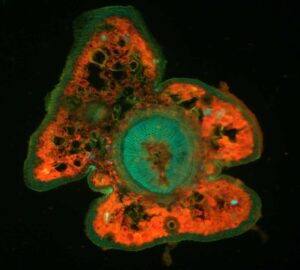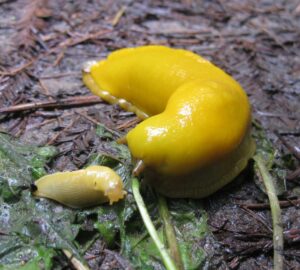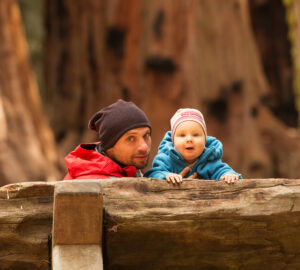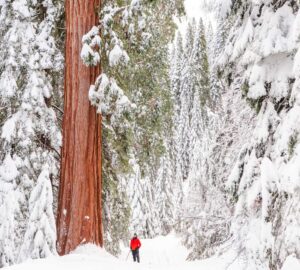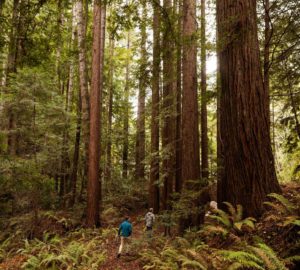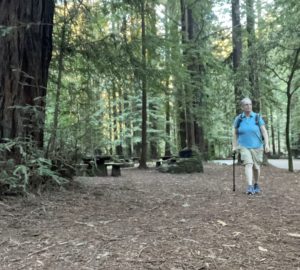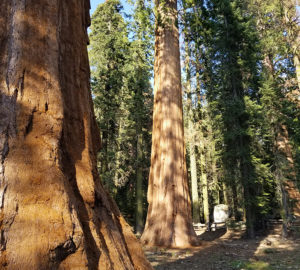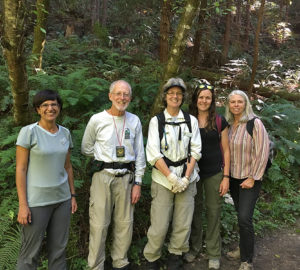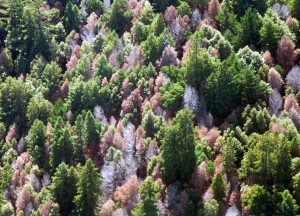
Last week, Deborah Zierten introduced us to sudden oak death, a nasty fungal disease (known in scientific circles as Phytopthera ramorum) that is causing the widespread decline and death of tanoak, one of the most common tree species found in the redwood forest (the fungus affects many other species as well, though tanoak seems to be the most susceptible).
Of course, the impacts of this disease are not limited to its host. As with any phenomenon in nature, sudden oak death (SOD) has effects that ripple throughout the community.
When a tanoak tree succumbs to SOD, it no longer competes with its neighbors for light, water, or soil nutrients. Because of this, there may be a short-term increase in growth as the surrounding trees take advantage of the newly-opened growing space. The diversity of herbaceous plants on the forest floor also increases.
However, these benefits are only temporary, and are paltry compensation for the long-term damage done to the ecosystem. League-sponsored research has found that when SOD does kill a clump of tanoak, the area is not colonized by new trees. The cause of this lack of regeneration isn’t yet known, but is certainly troubling.
Tanoak acorns provide a vital food source for a variety of bird and mammal species – such as deer, turkeys, Steller’s jays, and squirrels – who in turn serve as food themselves for carnivores such as mountain lions and raptors. With fewer acorns available on the forest floor, how will the wildlife communities be affected? Will other heavy-seeded tree species such as true oak and bay laurel be able to provide an adequate substitute, or will the decline of tanoak cause a similar drop in the abundance of the animal species that call the redwood forest home?
We can see that the absence of healthy tanoak brings with it ecological problems; the presence of the dead trees carries its own burdens as well. Recent League-sponsored research suggests that forest fires in areas affected by SOD might be three to four times hotter than fires in non-diseased areas.
Redwoods are known to be resistant to fire, but that resistance only develops as the trees age and put on thick, protective bark. Very young trees are not fire resistant, and can often killed by even milder fires. Redwoods of medium size — about two feet in diameter — are extremely susceptible to the increasing fire intensity caused by SOD. And while the trunks of old trees may be able to withstand flames, the “fuel ladders” provided by standing dead tanoak allow fire to reach the tops of the trees, where the fine branches and leaves are much more susceptible to burning. These ladder-climbing fires, known as “crown fires,” can indeed cause mortality to large old redwoods, despite their indomitable reputation.
What is to be done about SOD? The truth is that nobody really knows what to do. There are some efforts to find and develop resistant lineages of tanoak, and many land managers are practicing aggressive removal and quarantining practices in an attempt to prevent the disease from spreading.
Others are simply letting SOD take its course, on the justification that tanoak is more common today than it was historically, due to past timber harvesting; and that SOD is simply a correction, a way to return the forest to a more natural species composition (if the resulting fires can be controlled, of course…).
Whether there is one answer or many, whether SOD can be managed or if we are destined to lose an iconic species, only time will tell. Have you witnessed the impacts of sudden oak death? Let us know by leaving a comment, and include pictures if you have any.

